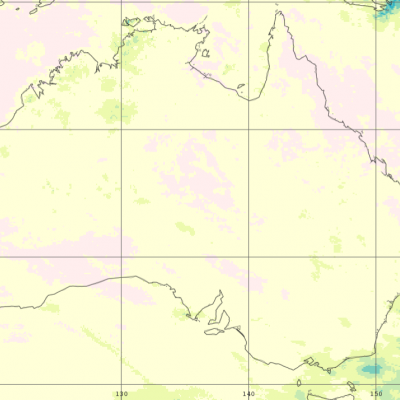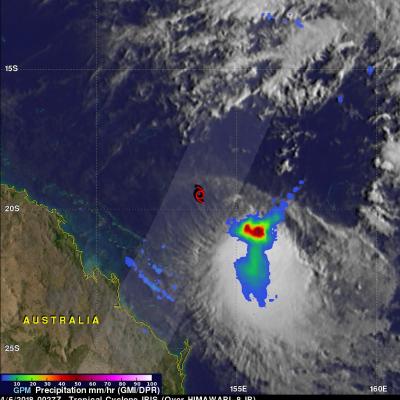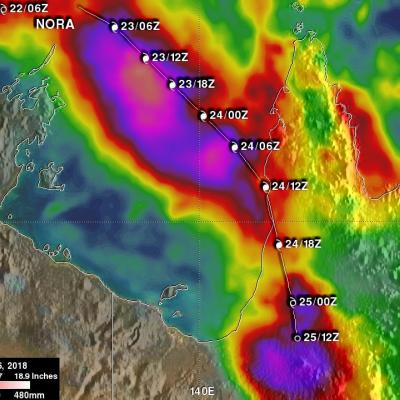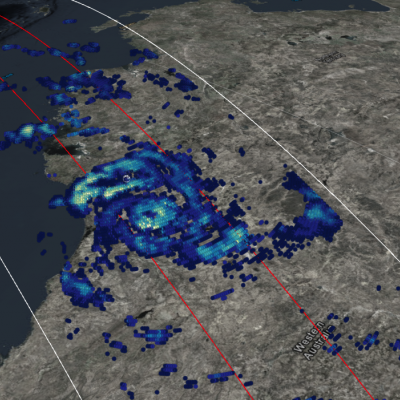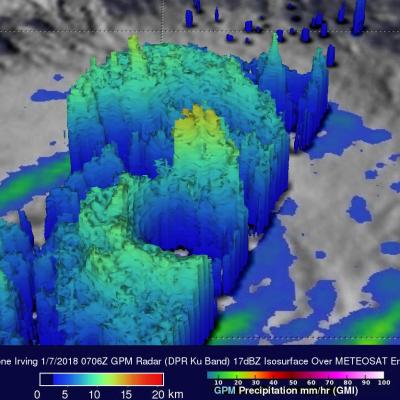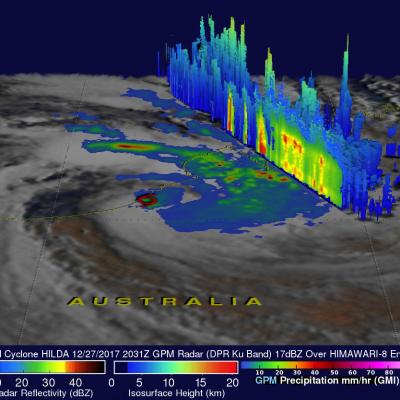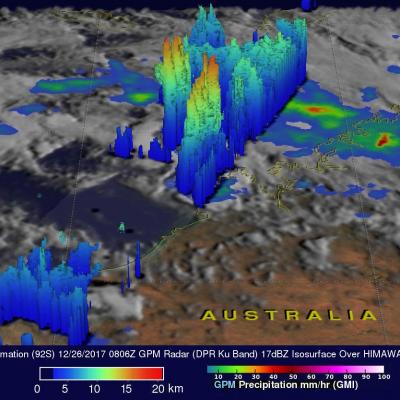GPM Shows Rainfall Southeast Of Sheared Tropical Cyclone Iris
The GPM core observatory satellite again passed over the center of tropical cyclone IRIS on April 6, 2018 at 0027 UTC (10:27 AM AEST). The location of IRIS' low level center of circulation is shown here with a red tropical storm symbol. Data collected by GPM's Microwave Imager (GMI) revealed that heavy convective rainfall was sheared to the southeast of IRIS' surface center of circulation. Those GMI data showed that precipitation in that area of strong convection was falling at a rate greater than 59 mm (2.3 inches) per hour while data received by GPM's Dual Frequency Precipitation Radar (DPR)




